The Qeysarie Gate is a historically significant gateway to Isfahan’s major market and is included in the Naqsh-e Jahan Square complex, which is Isfahan’s primary tourist destination. The gate is one of two locations in Isfahan that are included on the UNESCO World Heritage List, along with Naqsh-e Jahan Square.
The Grand Bazaar of Isfahan, also known as Qeysarie Bazaar(Iran bazaar), was founded in the eleventh century. This bazaar is one of the biggest and oldest in the Middle East. The current structure, built in the 17th century, is claimed to have the longest roof in the whole globe. The primary goods at this market, which is divided into many sections, are carpets and conventional rugs.
We will dive into the details of the fascinating Qeysarieh Bazaar.
History of Isfahan Grand Bazaar
Naqsh-e Jahan Square and the ancient Isfahan Grand Bazaar were joined by the Qeysarie Gate, which was constructed between 1611 and 1629. Shah Abbas put the project in motion, with Shaykh Bahai serving as the project’s architect. Qeysarie Gate, together with the market, portrays the might of Isfahan’s merchants, much as Naqshe Jahan and the structures surrounding it were intended to represent the grandeur of the new capital and all the elements of power.
Over the clock, there was a bronze bell. Shah Abbas stole this bell from the Portuguese fort and brought it here as loot from their battle in Hurmuz. Unfortunately, the bell was melted down to become a cannon in the 1800s. And the clock also hit its unknowable end at this moment.
A tilework depicting a guy who is half lion and firing at his dragon tail can be seen at the top of the entryway. This symbol’s creation dates back to Daylamit’s reign. Rukn al-Dawlah Dailami intended to encircle Isfahan with a tower. Rukn al-Dawlah commanded that Saadi’s estimates be taken into consideration for this reason since earlier monarchs respected astronomy and astronomers. The month of Azar (December), according to astronomers, is ideal for this. Since then, Sagittarius, the sign of December, has been regarded as the emblem of Isfahan.
The current bazaar was built on the location in the 17th century after it had been destroyed multiple times. The Qeysarie bazaar, the longest covered market in the world, is a vaulted two-kilometer corridor that connects the ancient and new parts of the city.
Isfahan Bazaar Architecture (Qeysarie Bazaar)
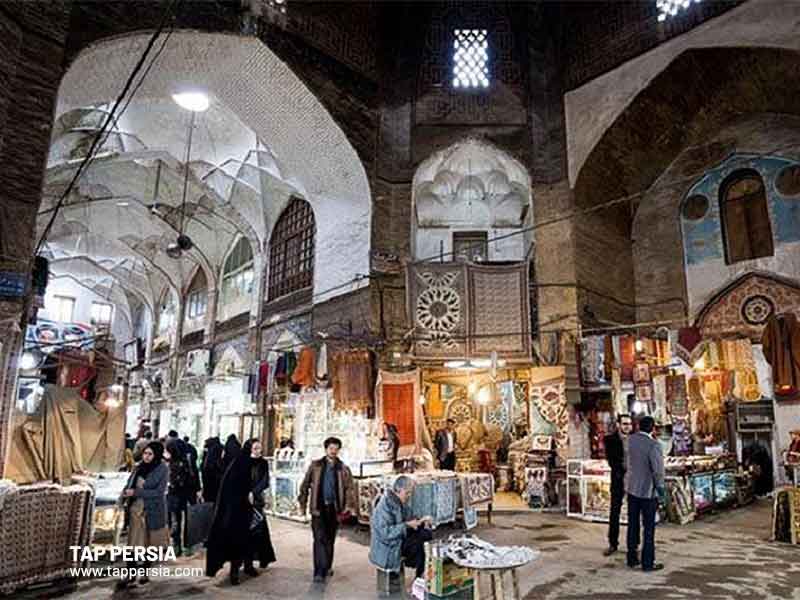
Starting from The Old Square, The Qeysarie Bazaar in Isfahan leads to the northern tip of Naqsh-e Jahan Square. The Qeysarie bazaar is like a tree with many branches and a central axis. The intersections are known as Char- Su (literally means four directions). In the market with nearby stores, there are a few gardens or open areas.
Location of Qeysarie Gate
The Qeysarie Gate is a prominent landmark in Isfahan’s Naqsh-e Jahan Square, which is home to several other tourist destinations. A magnificent Imam (Shah) Mosque may be seen in the southern portion of the area. The Chehel Sotoon Palace, Shah Historical Bath, and Hasht Behesht Palace are all within easy walking distance of the area. You will walk for 20 minutes before reaching Si-o-Se Bridge.
Where to Stay Near Qeysarie Gate
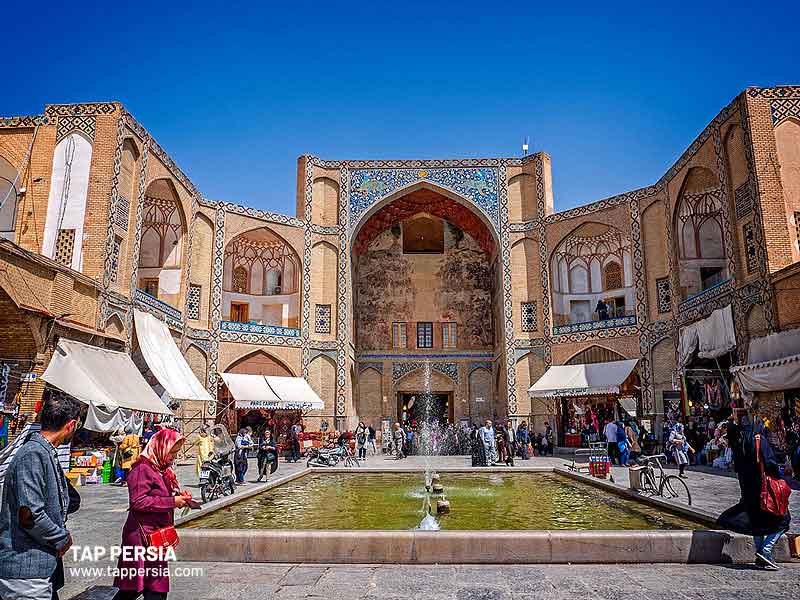
If you wish to stay close to the Qeysarie Gate and Qeysarie bazaar, there are options which are considered a few of the best hotels in Isfahan. The one-star Partikan Hotel is presumably the nearest hotel to the gate. The 3-star Part Hotel, Safavi Hotel, and the 2-star Pars Hotel are other affordable alternatives. For more opulent lodgings, consider the four-star Piroozy Hotel and the five-star Abbasi Hotel, two of Iran’s oldest hotels.
Where to Eat Near Qeysarie Gate?
The majority of the city’s top eateries are concentrated in the area surrounding Naqsh-e Jahan Square, which puts them close to Qeysarie Gate. Azadegan Café, regarded as one of the greatest cafés in Isfahan, offers traditional Persian food. Along with the unique food, the café’s interior is also interesting. Iranian food is also available at Bastani Café, as are appetizers at Roozegar Café and coffee and sweets at Coffee Left or Café 404.
Best Time to Visit Qeysarie Gate
Both Qeysarie Gate and Naqsh-e Jahan Square are open for visits at all times. The evening, right before sunset, when the sunlight caresses the mosques’ domes, is considered to offer the most picturesque views. Plan your visit to Ali Qapu Palace between 9.00 and 18.30 if you wish to go. The mosques’ opening times vary depending on the time of day when people pray.
How to Get to Qeysarie Gate
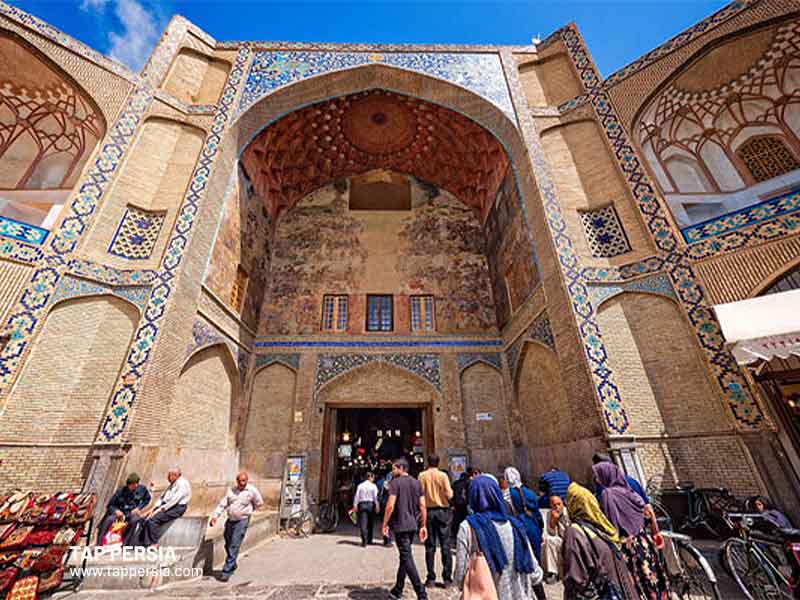
Hopefully, there are many ways to reach this fascinating Bazaar:
By Car
If you’re driving, parking spaces are available on Ostandari Street, close to Naqsh-e Jahan Square’s western wall, and on the eastern side of the Shah Mosque.
By Foot
Hasht Behesht Palace, Chehel Sotoun Palace, Si-o-Se-Pol, Qeysarie bazaar, and Historical Bath are all accessible by foot and are all close to one another.
By Metro
The closest metro station is Takhti if you are staying outside of the city center or traveling from the airport or bus terminal. From the gate, it may be reached by foot in 20 minutes.
By Bus
Choose a bus that passes Central Library or Khorshid Hospital if you wish to take public transportation to go to the gate.
Qeysarie Gate, with valuable paintings
On the north side of Naghsh Jahan Square in Isfahan, there is a medieval bazaar called Qeysarie Bazaar. The “Qeysarie Gate,” the bazaar’s entry gate, was constructed at the start of the Safavid era and has paintings by the era’s leading artist, Reza Abbasi. The Abbasid kings’ conflict with the Ottoman army is mostly shown in these paintings. Similar to certain hunting frescos created by European painters are these paintings. Unfortunately, several of the paintings’ colors have faded due to excessive direct sunlight and humidity. Sadly, a lot of these works have been lost or destroyed.
Timche Malek ( Malekotojar ), In Historical Grand Bazar of Isfahan
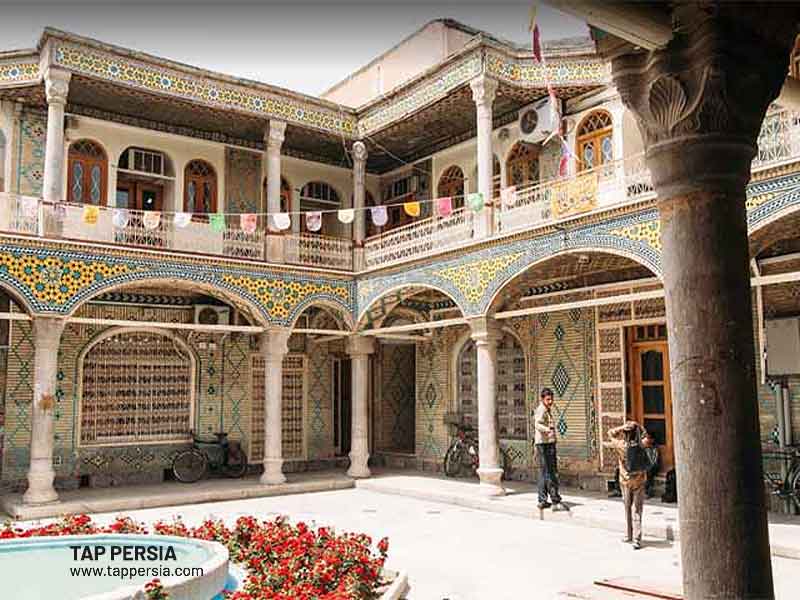
One of the most exquisite antique business complexes in the Isfahan Grand Bazaar is Timcheh Malek.
The Isfahan Grand bazaar’s historic business structures (passage) are referred to as “Timcheh” or “Sara.” There are a lot of these Sara or Timchehs in the old market in Isfahan.
One of the most exquisite antique commercial buildings in the Qeysarie bazaar was constructed during the Qajar era and is called Timcheh Malek Isfahan. This home features a lovely courtyard and a mansion with a roof. The courtyard is surrounded by two-story buildings that serve as the marketplace for dealers and merchants. This Timcheh home features a dome-shaped roof with lovely Mogharnas ornamentation.
Isfahan Handicrafts
The handicrafts of any nation are among the artistic creations of its citizens that reflect their historical and cultural identities.
Iran offers a wide variety of handicrafts in its many towns and regions due to its size. A list of notable and well-known Iranian handicrafts is provided below:
· Weaving carpets, kilims, and traditional rugs
· Work on metal (coppersmith works)
· Ceramics and pottery
· Fine industries such as inlay, turquoise, enameling, and glass
· Work on fabrics such as cashmere, tapestry, and crochet
· Gilding and painting
· Printing on textiles and leather industries
· Rural handicrafts like felting and mat weaving
· Wood inlay and mosaic
· Tiling
Assarkhaneh Shahi Museum, Isfahan
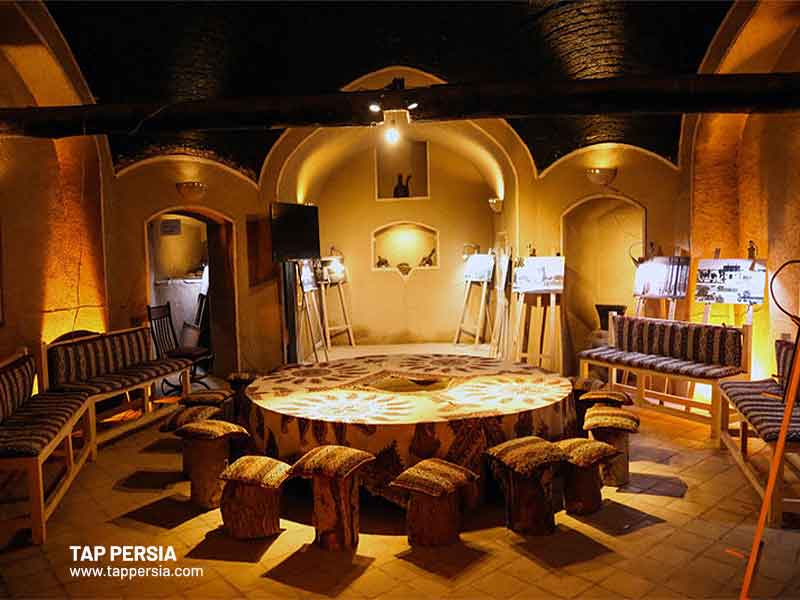
The Qeysarie bazaar is home to the Safavid era’s Assarkhaneh Shahi, which dates back 400 years.
Traditional oil extraction from oilseeds including sesame and cottonseed has taken place in Assarkhaneh. Initially, the oil was extracted from the grains by pressing them after they had been ground with millstones. Camels were used to move the mill’s stones, and beams from very huge and long tree trunks were used to crush the grains once they had been ground.
You go into a space from a few hundred years ago when you enter the Assarkhane Shahi. This space is a huge, somewhat gloomy hall with mud walls. A extremely huge and sturdy tree’s trunk, which has a diameter of more than one meter and a length of several meters, is supported horizontally on beams. Large millstones that were hauled by camels are in the center of the room.
Flour was initially made from oil seeds. Then they used them to make dough. The mixture was then pressed to extract the oil using a very hefty tree trunk. After that, the oil was gathered in vats.
In Isfahan, there were several Assarkhane mansions. They frequently had to destroy a lot of homes along the road to bring the large trees within the assarkhaneh since they had to be transported from India.
It appears that Assarkhaneh Shahi has ties to the Safavid era. Even recently, when oil extraction equipment had not yet arrived in the nation, it was still in operation. Even they have manipulated the tree trunk by using motors and gearboxes.
Assarkhaneh Shahi is now known as the “Assarkhanh Shahi Museum” and is a popular tourist destination.
Near the Isfahan Grand Mosque, there is another assarkhaneh by the name of Jamaleh.

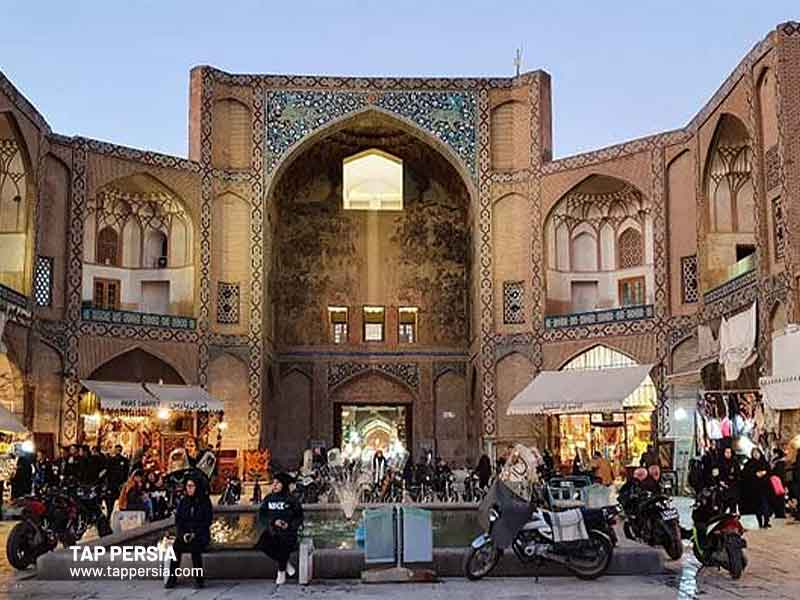


Comment (0)